RBS 2011 Annual Report Download - page 320
Download and view the complete annual report
Please find page 320 of the 2011 RBS annual report below. You can navigate through the pages in the report by either clicking on the pages listed below, or by using the keyword search tool below to find specific information within the annual report.-
 1
1 -
 2
2 -
 3
3 -
 4
4 -
 5
5 -
 6
6 -
 7
7 -
 8
8 -
 9
9 -
 10
10 -
 11
11 -
 12
12 -
 13
13 -
 14
14 -
 15
15 -
 16
16 -
 17
17 -
 18
18 -
 19
19 -
 20
20 -
 21
21 -
 22
22 -
 23
23 -
 24
24 -
 25
25 -
 26
26 -
 27
27 -
 28
28 -
 29
29 -
 30
30 -
 31
31 -
 32
32 -
 33
33 -
 34
34 -
 35
35 -
 36
36 -
 37
37 -
 38
38 -
 39
39 -
 40
40 -
 41
41 -
 42
42 -
 43
43 -
 44
44 -
 45
45 -
 46
46 -
 47
47 -
 48
48 -
 49
49 -
 50
50 -
 51
51 -
 52
52 -
 53
53 -
 54
54 -
 55
55 -
 56
56 -
 57
57 -
 58
58 -
 59
59 -
 60
60 -
 61
61 -
 62
62 -
 63
63 -
 64
64 -
 65
65 -
 66
66 -
 67
67 -
 68
68 -
 69
69 -
 70
70 -
 71
71 -
 72
72 -
 73
73 -
 74
74 -
 75
75 -
 76
76 -
 77
77 -
 78
78 -
 79
79 -
 80
80 -
 81
81 -
 82
82 -
 83
83 -
 84
84 -
 85
85 -
 86
86 -
 87
87 -
 88
88 -
 89
89 -
 90
90 -
 91
91 -
 92
92 -
 93
93 -
 94
94 -
 95
95 -
 96
96 -
 97
97 -
 98
98 -
 99
99 -
 100
100 -
 101
101 -
 102
102 -
 103
103 -
 104
104 -
 105
105 -
 106
106 -
 107
107 -
 108
108 -
 109
109 -
 110
110 -
 111
111 -
 112
112 -
 113
113 -
 114
114 -
 115
115 -
 116
116 -
 117
117 -
 118
118 -
 119
119 -
 120
120 -
 121
121 -
 122
122 -
 123
123 -
 124
124 -
 125
125 -
 126
126 -
 127
127 -
 128
128 -
 129
129 -
 130
130 -
 131
131 -
 132
132 -
 133
133 -
 134
134 -
 135
135 -
 136
136 -
 137
137 -
 138
138 -
 139
139 -
 140
140 -
 141
141 -
 142
142 -
 143
143 -
 144
144 -
 145
145 -
 146
146 -
 147
147 -
 148
148 -
 149
149 -
 150
150 -
 151
151 -
 152
152 -
 153
153 -
 154
154 -
 155
155 -
 156
156 -
 157
157 -
 158
158 -
 159
159 -
 160
160 -
 161
161 -
 162
162 -
 163
163 -
 164
164 -
 165
165 -
 166
166 -
 167
167 -
 168
168 -
 169
169 -
 170
170 -
 171
171 -
 172
172 -
 173
173 -
 174
174 -
 175
175 -
 176
176 -
 177
177 -
 178
178 -
 179
179 -
 180
180 -
 181
181 -
 182
182 -
 183
183 -
 184
184 -
 185
185 -
 186
186 -
 187
187 -
 188
188 -
 189
189 -
 190
190 -
 191
191 -
 192
192 -
 193
193 -
 194
194 -
 195
195 -
 196
196 -
 197
197 -
 198
198 -
 199
199 -
 200
200 -
 201
201 -
 202
202 -
 203
203 -
 204
204 -
 205
205 -
 206
206 -
 207
207 -
 208
208 -
 209
209 -
 210
210 -
 211
211 -
 212
212 -
 213
213 -
 214
214 -
 215
215 -
 216
216 -
 217
217 -
 218
218 -
 219
219 -
 220
220 -
 221
221 -
 222
222 -
 223
223 -
 224
224 -
 225
225 -
 226
226 -
 227
227 -
 228
228 -
 229
229 -
 230
230 -
 231
231 -
 232
232 -
 233
233 -
 234
234 -
 235
235 -
 236
236 -
 237
237 -
 238
238 -
 239
239 -
 240
240 -
 241
241 -
 242
242 -
 243
243 -
 244
244 -
 245
245 -
 246
246 -
 247
247 -
 248
248 -
 249
249 -
 250
250 -
 251
251 -
 252
252 -
 253
253 -
 254
254 -
 255
255 -
 256
256 -
 257
257 -
 258
258 -
 259
259 -
 260
260 -
 261
261 -
 262
262 -
 263
263 -
 264
264 -
 265
265 -
 266
266 -
 267
267 -
 268
268 -
 269
269 -
 270
270 -
 271
271 -
 272
272 -
 273
273 -
 274
274 -
 275
275 -
 276
276 -
 277
277 -
 278
278 -
 279
279 -
 280
280 -
 281
281 -
 282
282 -
 283
283 -
 284
284 -
 285
285 -
 286
286 -
 287
287 -
 288
288 -
 289
289 -
 290
290 -
 291
291 -
 292
292 -
 293
293 -
 294
294 -
 295
295 -
 296
296 -
 297
297 -
 298
298 -
 299
299 -
 300
300 -
 301
301 -
 302
302 -
 303
303 -
 304
304 -
 305
305 -
 306
306 -
 307
307 -
 308
308 -
 309
309 -
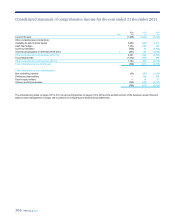 310
310 -
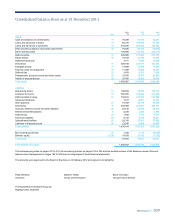 311
311 -
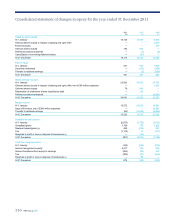 312
312 -
 313
313 -
 314
314 -
 315
315 -
 316
316 -
 317
317 -
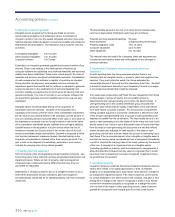 318
318 -
 319
319 -
 320
320 -
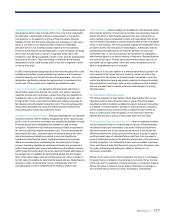 321
321 -
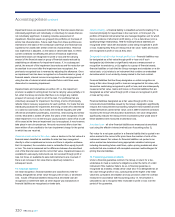 322
322 -
 323
323 -
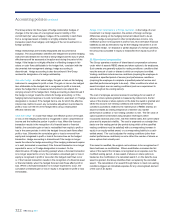 324
324 -
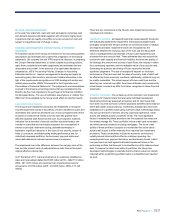 325
325 -
 326
326 -
 327
327 -
 328
328 -
 329
329 -
 330
330 -
 331
331 -
 332
332 -
 333
333 -
 334
334 -
 335
335 -
 336
336 -
 337
337 -
 338
338 -
 339
339 -
 340
340 -
 341
341 -
 342
342 -
 343
343 -
 344
344 -
 345
345 -
 346
346 -
 347
347 -
 348
348 -
 349
349 -
 350
350 -
 351
351 -
 352
352 -
 353
353 -
 354
354 -
 355
355 -
 356
356 -
 357
357 -
 358
358 -
 359
359 -
 360
360 -
 361
361 -
 362
362 -
 363
363 -
 364
364 -
 365
365 -
 366
366 -
 367
367 -
 368
368 -
 369
369 -
 370
370 -
 371
371 -
 372
372 -
 373
373 -
 374
374 -
 375
375 -
 376
376 -
 377
377 -
 378
378 -
 379
379 -
 380
380 -
 381
381 -
 382
382 -
 383
383 -
 384
384 -
 385
385 -
 386
386 -
 387
387 -
 388
388 -
 389
389 -
 390
390 -
 391
391 -
 392
392 -
 393
393 -
 394
394 -
 395
395 -
 396
396 -
 397
397 -
 398
398 -
 399
399 -
 400
400 -
 401
401 -
 402
402 -
 403
403 -
 404
404 -
 405
405 -
 406
406 -
 407
407 -
 408
408 -
 409
409 -
 410
410 -
 411
411 -
 412
412 -
 413
413 -
 414
414 -
 415
415 -
 416
416 -
 417
417 -
 418
418 -
 419
419 -
 420
420 -
 421
421 -
 422
422 -
 423
423 -
 424
424 -
 425
425 -
 426
426 -
 427
427 -
 428
428 -
 429
429 -
 430
430 -
 431
431 -
 432
432 -
 433
433 -
 434
434 -
 435
435 -
 436
436 -
 437
437 -
 438
438 -
 439
439 -
 440
440 -
 441
441 -
 442
442 -
 443
443 -
 444
444 -
 445
445 -
 446
446 -
 447
447 -
 448
448 -
 449
449 -
 450
450 -
 451
451 -
 452
452 -
 453
453 -
 454
454 -
 455
455 -
 456
456 -
 457
457 -
 458
458 -
 459
459 -
 460
460 -
 461
461 -
 462
462 -
 463
463 -
 464
464 -
 465
465 -
 466
466 -
 467
467 -
 468
468 -
 469
469 -
 470
470 -
 471
471 -
 472
472 -
 473
473 -
 474
474 -
 475
475 -
 476
476 -
 477
477 -
 478
478 -
 479
479 -
 480
480 -
 481
481 -
 482
482 -
 483
483 -
 484
484 -
 485
485 -
 486
486 -
 487
487 -
 488
488 -
 489
489 -
 490
490
 |
 |

318 RBS Group 2011
Life assurance
The Group's long-term assurance contracts include whole-life term
assurance, endowment assurance, flexible whole-life, pension and
annuity contracts that are expected to remain in force for an extended
period of time. Long-term assurance contracts under which the Group
does not accept significant insurance risk are classified as financial
instruments.
The Group recognises the value of in-force long-term assurance
contracts as an asset. Cash flows associated with in-force contracts and
related assets, including reinsurance cash flows, are projected, using
appropriate assumptions as to future mortality, persistency and levels of
expenses and excluding the value of future investment margins, to
estimate future surpluses attributable to the Group. These surpluses,
discounted at a risk-adjusted rate, are recognised as a separate asset.
Changes in the value of this asset are included in profit or loss.
Premiums on long-term insurance contracts are recognised as income
when receivable. Claims on long-term insurance contracts reflect the cost
of all claims arising during the year, including claims handling costs.
Claims are recognised when the Group becomes aware of the claim.
Reinsurance
The Group has reinsurance treaties that transfer significant insurance
risk. Liabilities for reinsured contracts are calculated gross of reinsurance
and a separate reinsurance asset recorded.
13. Provisions
The Group recognises a provision for a present obligation resulting from
apast event when it is more likely than not that it will be required to
transfer economic benefits to settle the obligation and the amount of the
obligation can be estimated reliably.
Provision is made for restructuring costs, including the costs of
redundancy, when the Group has a constructive obligation to restructure.
An obligation exists when the Group has a detailed formal plan for the
restructuring and has raised a valid expectation in those affected by
starting to implement the plan or announcing its main features.
If the Group has a contract that is onerous, it recognises the present
obligation under the contract as a provision. An onerous contract is one
where the unavoidable costs of meeting the Group’s contractual
obligations exceed the expected economic benefits. When the Group
vacates a leasehold property, a provision is recognised for the costs
under the lease less any expected economic benefits (such as rental
income).
Contingent liabilities are possible obligations arising from past events,
whose existence will be confirmed only by uncertain future events, or
present obligations arising from past events that are not recognised
because either an outflow of economic benefits is not probable or the
amount of the obligation cannot be reliably measured. Contingent
liabilities are not recognised but information about them is disclosed
unless the possibility of any outflow of economic benefits in settlement is
remote.
14. Tax
Income tax expense or income, comprising current tax and deferred tax,
is recorded in the income statement except income tax on items
recognised outside profit or loss which is credited or charged to other
comprehensive income or to equity as appropriate.
Current tax is income tax payable or recoverable in respect of the taxable
profit or loss for the year arising in income or in equity. Provision is made
for current tax at rates enacted or substantively enacted at the balance
sheet date.
Deferred tax is the tax expected to be payable or recoverable in respect
of temporary differences between the carrying amount of an asset or
liability for accounting purposes and its carrying amount for tax purposes.
Deferred tax liabilities are generally recognised for all taxable temporary
differences and deferred tax assets are recognised to the extent that it is
probable that they will be recovered. Deferred tax is not recognised on
temporary differences that arise from initial recognition of an asset or a
liability in a transaction (other than a business combination) that at the
time of the transaction affects neither accounting nor taxable profit or
loss. Deferred tax is calculated using tax rates expected to apply in the
periods when the assets will be realised or the liabilities settled, based on
tax rates and laws enacted, or substantively enacted, at the balance
sheet date.
Deferred tax assets and liabilities are offset where the Group has a
legally enforceable right to offset and where they relate to income taxes
levied by the same taxation authority either on an individual Group
companyor on Group companies in the same tax group that intend, in
future periods, to settle current tax liabilities and assets on a net basis or
on a gross basis simultaneously.
15. Financial assets
On initial recognition, financial assets are classified into held-to-maturity
investments; held-for-trading; designated as at fair value through profit or
loss; loans and receivables; or available-for-sale financial assets.
Regular way purchases of financial assets classified as loans and
receivables are recognised on settlement date; all other regular way
transactions in financial assets are recognised on trade date.
Held-to-maturity investments - afinancial asset may be classified as a
held-to-maturity investment only if it has fixed or determinable payments,
afixed maturity and the Group has the positive intention and ability to
hold to maturity. Held-to-maturity investments are initially recognised at
fair value plus directly related transaction costs. They are subsequently
measured at amortised cost using the effective interest method (see
Accounting policy 3) less any impairment losses.
Held-for-trading - a financial asset is classified as held-for-trading if it is
acquired principally for sale in the near term, or forms part of a portfolio of
financial instruments that are managed together and for which there is
evidence of short-term profit taking, or it is a derivative (not in a qualifying
hedge relationship). Held-for-trading financial assets are recognised at
fair value with transaction costs being recognised in profit or loss.
Subsequently they are measured at fair value. Gains and losses on held-
for-trading financial assets are recognised in profit or loss as they arise.
Accounting policies continued
